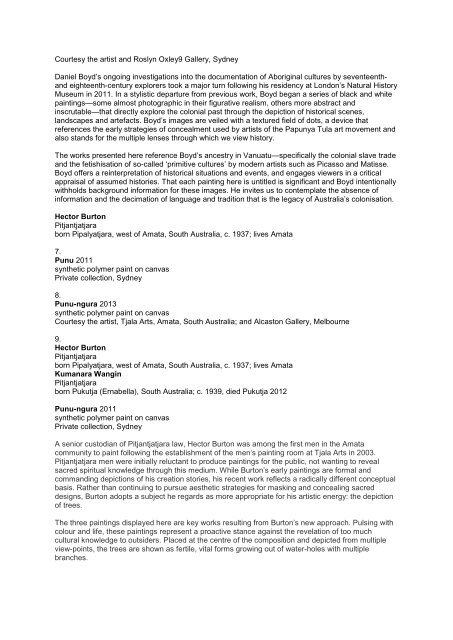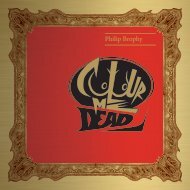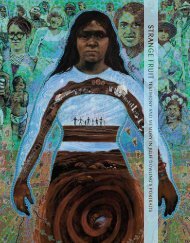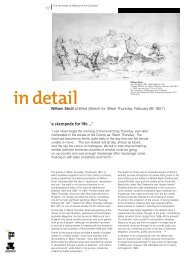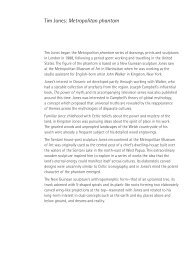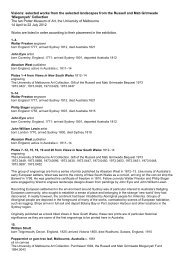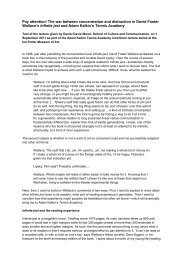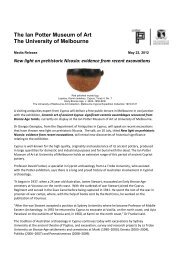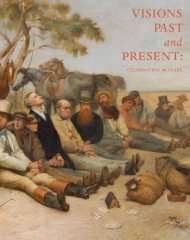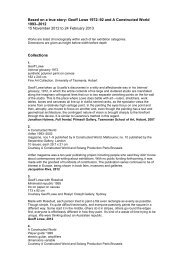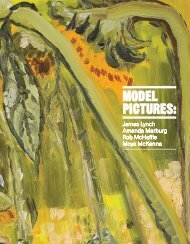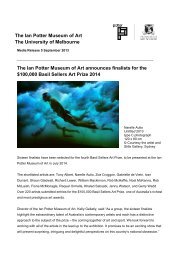Under the sun: the Kate Challis RAKA Award 2013 The Ian Potter ...
Under the sun: the Kate Challis RAKA Award 2013 The Ian Potter ...
Under the sun: the Kate Challis RAKA Award 2013 The Ian Potter ...
- No tags were found...
You also want an ePaper? Increase the reach of your titles
YUMPU automatically turns print PDFs into web optimized ePapers that Google loves.
Courtesy <strong>the</strong> artist and Roslyn Oxley9 Gallery, Sydney<br />
Daniel Boyd’s ongoing investigations into <strong>the</strong> documentation of Aboriginal cultures by seventeenthand<br />
eighteenth-century explorers took a major turn following his residency at London’s Natural History<br />
Museum in 2011. In a stylistic departure from previous work, Boyd began a series of black and white<br />
paintings—some almost photographic in <strong>the</strong>ir figurative realism, o<strong>the</strong>rs more abstract and<br />
inscrutable—that directly explore <strong>the</strong> colonial past through <strong>the</strong> depiction of historical scenes,<br />
landscapes and artefacts. Boyd’s images are veiled with a textured field of dots, a device that<br />
references <strong>the</strong> early strategies of concealment used by artists of <strong>the</strong> Papunya Tula art movement and<br />
also stands for <strong>the</strong> multiple lenses through which we view history.<br />
<strong>The</strong> works presented here reference Boyd’s ancestry in Vanuatu—specifically <strong>the</strong> colonial slave trade<br />
and <strong>the</strong> fetishisation of so-called ‘primitive cultures’ by modern artists such as Picasso and Matisse.<br />
Boyd offers a reinterpretation of historical situations and events, and engages viewers in a critical<br />
appraisal of assumed histories. That each painting here is untitled is significant and Boyd intentionally<br />
withholds background information for <strong>the</strong>se images. He invites us to contemplate <strong>the</strong> absence of<br />
information and <strong>the</strong> decimation of language and tradition that is <strong>the</strong> legacy of Australia’s colonisation.<br />
Hector Burton<br />
Pitjantjatjara<br />
born Pipalyatjara, west of Amata, South Australia, c. 1937; lives Amata<br />
7.<br />
Punu 2011<br />
syn<strong>the</strong>tic polymer paint on canvas<br />
Private collection, Sydney<br />
8.<br />
Punu-ngura <strong>2013</strong><br />
syn<strong>the</strong>tic polymer paint on canvas<br />
Courtesy <strong>the</strong> artist, Tjala Arts, Amata, South Australia; and Alcaston Gallery, Melbourne<br />
9.<br />
Hector Burton<br />
Pitjantjatjara<br />
born Pipalyatjara, west of Amata, South Australia, c. 1937; lives Amata<br />
Kumanara Wangin<br />
Pitjantjatjara<br />
born Pukutja (Ernabella), South Australia; c. 1939, died Pukutja 2012<br />
Punu-ngura 2011<br />
syn<strong>the</strong>tic polymer paint on canvas<br />
Private collection, Sydney<br />
A senior custodian of Pitjantjatjara law, Hector Burton was among <strong>the</strong> first men in <strong>the</strong> Amata<br />
community to paint following <strong>the</strong> establishment of <strong>the</strong> men’s painting room at Tjala Arts in 2003.<br />
Pitjantjatjara men were initially reluctant to produce paintings for <strong>the</strong> public, not wanting to reveal<br />
sacred spiritual knowledge through this medium. While Burton’s early paintings are formal and<br />
commanding depictions of his creation stories, his recent work reflects a radically different conceptual<br />
basis. Ra<strong>the</strong>r than continuing to pursue aes<strong>the</strong>tic strategies for masking and concealing sacred<br />
designs, Burton adopts a subject he regards as more appropriate for his artistic energy: <strong>the</strong> depiction<br />
of trees.<br />
<strong>The</strong> three paintings displayed here are key works resulting from Burton’s new approach. Pulsing with<br />
colour and life, <strong>the</strong>se paintings represent a proactive stance against <strong>the</strong> revelation of too much<br />
cultural knowledge to outsiders. Placed at <strong>the</strong> centre of <strong>the</strong> composition and depicted from multiple<br />
view-points, <strong>the</strong> trees are shown as fertile, vital forms growing out of water-holes with multiple<br />
branches.


